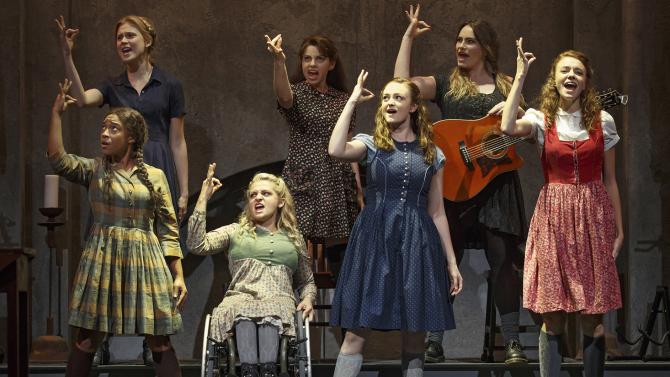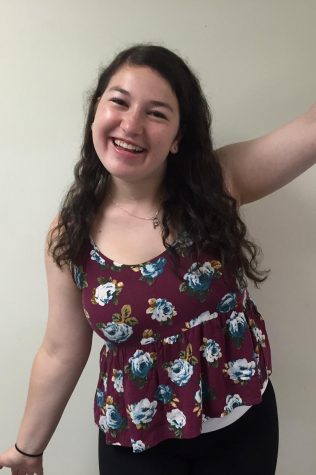Spring Awakening Redefines Boundaries in Broadway Revival
January 8, 2016
How do you make a musical for the deaf? Though not a question that crosses my mind regularly, when provoked I am left with no answer. It seems impossible for deaf people to enjoy a musical without hearing each chord and cue, nevertheless participate as an actor.
This seemingly impossible task was conquered, however, by the cast of the 2015 revival of Spring Awakening. This production, produced by a company called Deaf West, brought deaf and hearing actors together to work on the production.
Spring Awakening first premiered on Broadway in 2006, starring now famous actors such as Lea Michele, Jonathan Groff,and Skylar Astin. It is a rock musical with music by Duncan Sheik and a book and lyrics by Steven Sater. The story follows a group of teenagers in Germany in the late 19th century who are coming of age. The score and plot deal with discoveries of teenage sexuality and feeling misunderstood by adults.
The revival truly reinvented this story. Of the three main actors, two were deaf, and the other had studied American Sign Language in college, making him an anomaly to the Broadway stage. Each deaf actor had a hearing actor shadowing them, acting as their voice. All the actors, hearing or deaf, signed the entire show. The female lead, Wendla, was portrayed by Sandra Mae Frank, and I saw the understudy of her voice, Lizzy Cuesta. The two worked in perfect tandem to portray the innocent girl who yearns for her mother to tell her more. The shy, nervous Moritz was brought to life by Daniel Durant, and Alex Boniello sounded incredible as his voice. The use of deaf actors in these two critical roles helped to show the miscommunication between adults and teens, which is a major conflict in the plot. Austin McKenzie was captivating in his theatrical debut as the charming and intelligent Melchior. Musical theater fanatics will be pleased to know that the cast did include some Broadway veterans. Krysta Rodriguez had an unsurpassed stage presence as Ilse, and Andy Mientus was delightfully wonderful as Hanschen. Ali Stroker, made famous by her time on The Glee Project, did an outstanding job in her role as Anna. Stroker made her debut as the first Broadway actress in a wheelchair.
The director, Michael Arden, did not stop with just the addition of sign language. All six of the deaf actors had people singing and speaking as their voices, but these people were also the members of the band! As Cuesta sang the beautiful words of the show’s first song, “Mama Who Bore Me,” she accompanied herself on the guitar. I was blown away at how talented these musicians-turned-actors were. There was no obstacle they couldn’t conquer.
The set was also aesthetically pleasing. Moving staircases provided the structure for the various settings. Additionally, in a few scenes a projector was used on a chalkboard. This was particularly powerful in the scene when Moritz tells his father that he failed out of school. The scene was completely silent, with only the actors signing to one another and the words displayed on the chalkboard. Every detail, from the clothes the actors were wearing to the font on the chalkboard, was thoroughly planned.
I had never seen Spring Awakening before this adaptation, but I left in absolute awe. Spring Awakening was the definition of a true ensemble piece. The entire cast had to work together. Everyone learned sign language, and had to signal cues to help the deaf actors who did a phenomenal job. From the actors to the orchestra, everyone was included. A typical story became extraordinary, but only for a limited run. The show closes on Broadway on January 24, 2016.






Henry Thomas LaGreca • Mar 21, 2017 at 9:33 am
I mean deaf**** not dead
Henry Thomas LaGreca • Mar 21, 2017 at 9:33 am
I wish I had an input on this, I’ve seen this play and my dad is dead, so I am fluent in sign language… I knew how to sign before I knew how to talk… I just saw the Book of Mormon in ASL as well. If you’re gobig to do more clips about the deaf, I’d love some input.